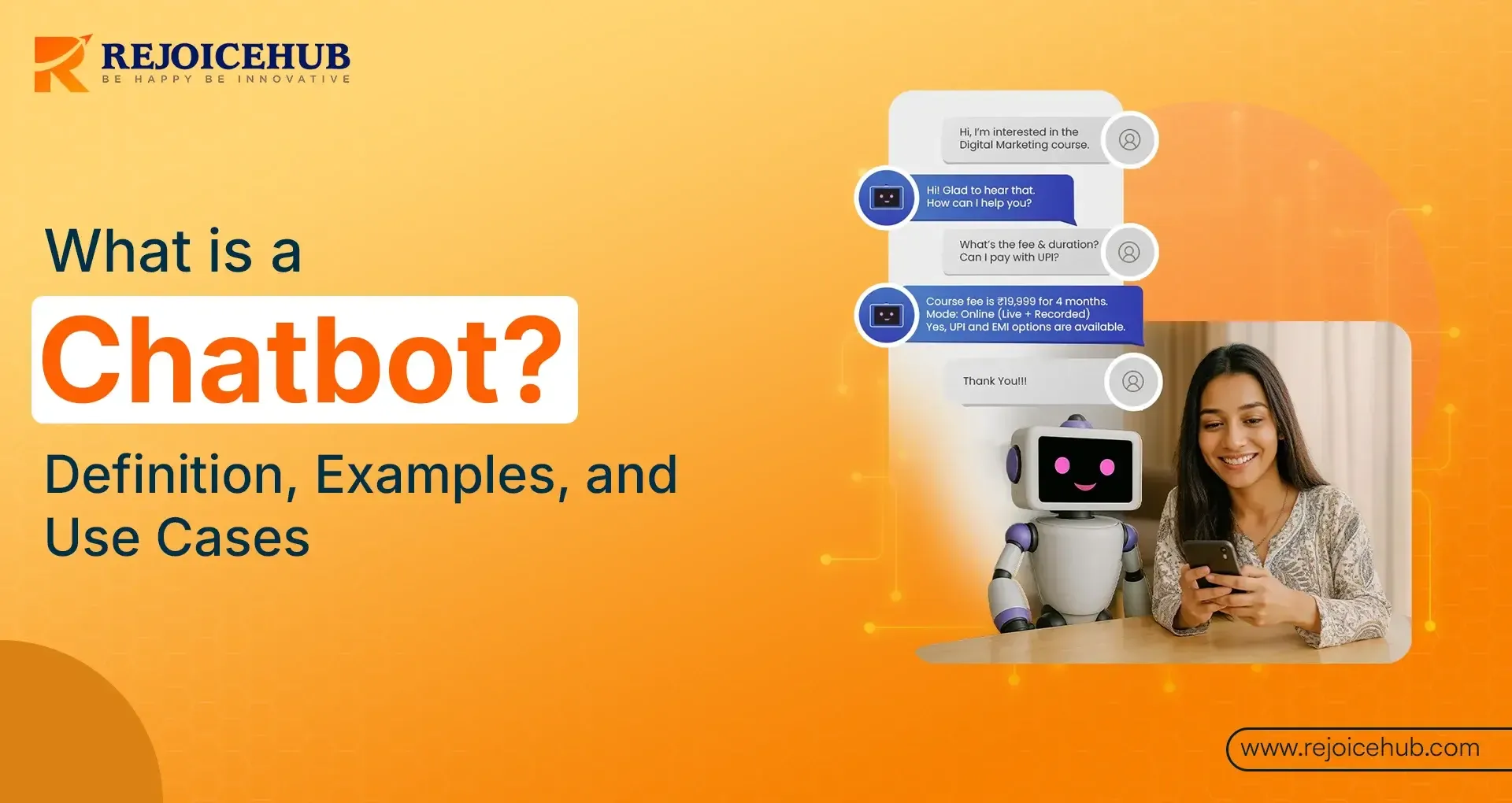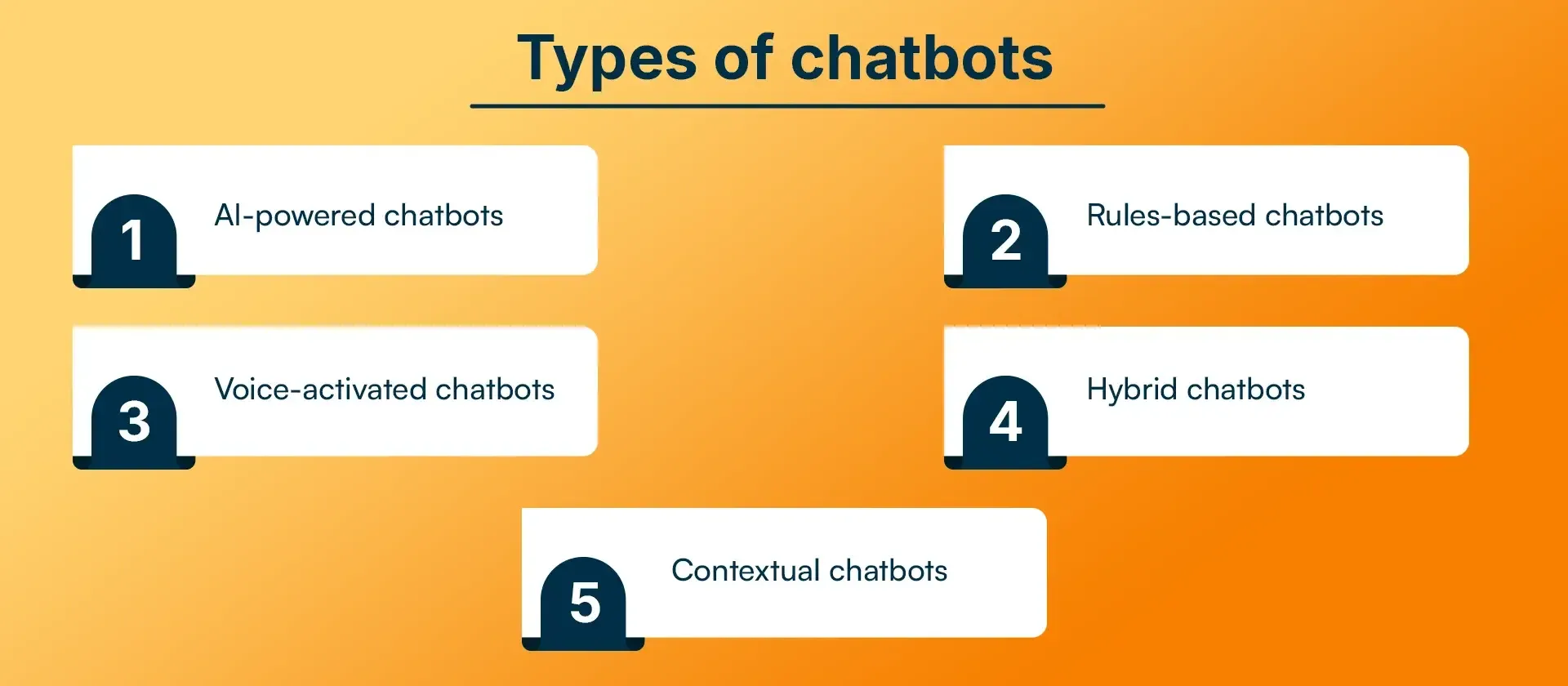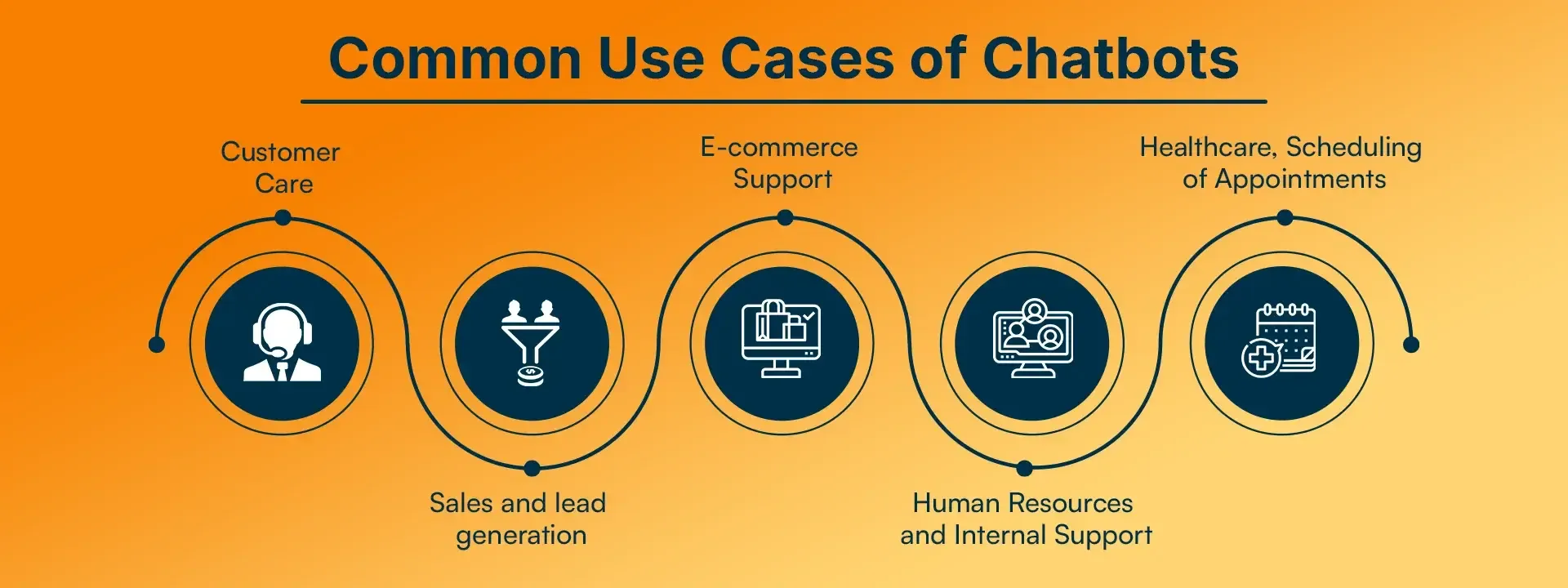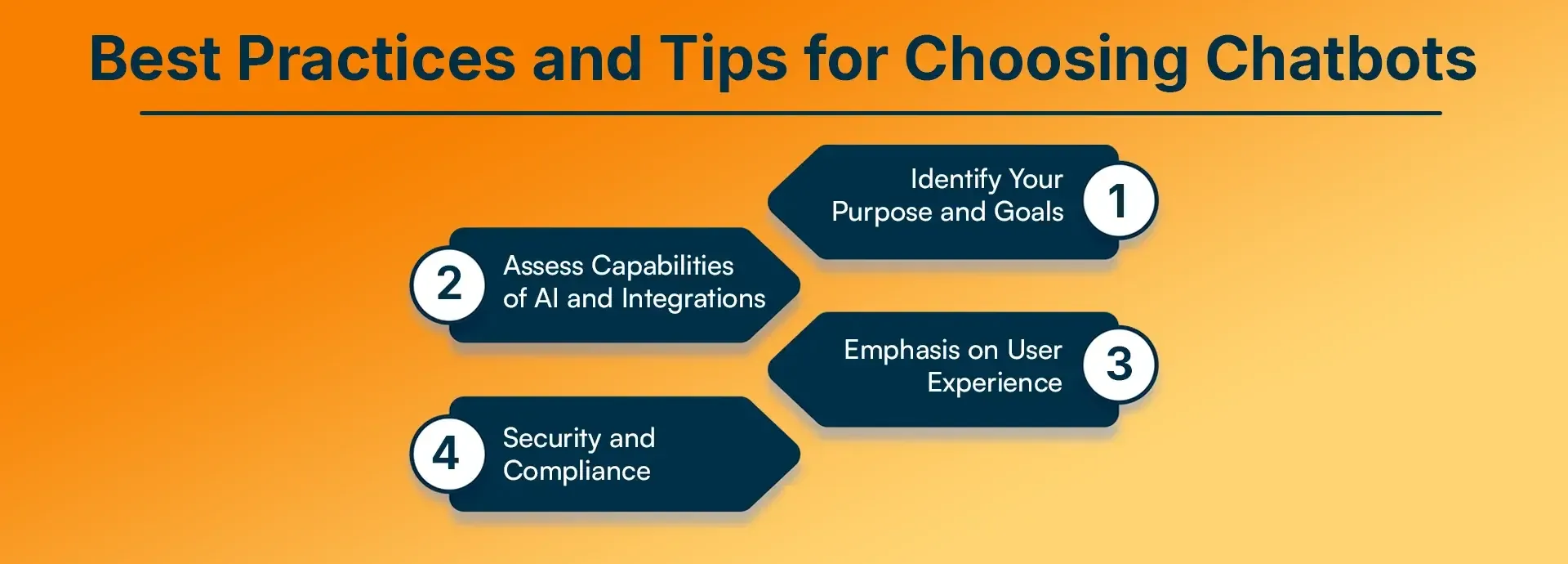
You've likely interacted with a brand's support chatbot at some point regarding a query or support issue. And you've likely noticed that modern chatbots offer highly personalized and quick responses.
From my experience, earlier chatbots were quite irritating and gave fixed answers, no matter what question you posed. The advent of chatbots also significantly benefits businesses, as they provide the best customer support experience, 24/7, without any salary. These virtual assistants have become a core communication component of modern businesses. Even many modern multimodal chatbots can handle complete workflows or CRMs automatically.
I've closely monitored AI chatbots throughout my career, and in the last few years, they've evolved significantly, enabling them to handle everything from simple to complex operations with ease.
In this article, we'll explore the evolution of chatbots, their current business position, and how they're impacting business operations. Whether you can use them in your own businesses, we'll try to understand them in detail.
Quick Summary
I've seen many people think that chatbots are robots, but in reality, most chatbots are virtual or software-based, designed to handle fixed sectors or operations using the company's CRM or training rules. Most businesses today use chatbots for customer service tasks or workflows.
Modern chatbots today use advanced technologies like Natural Language Processing (NLP) and Machine Learning (ML), and traditional chatbots use fixed rules for customer interactions
Chatbots are playing a vital role in improving human communication and customer experience, saving businesses significant costs.
Our focus in this article:
1. What are chatbots and how do they work?
2. How are businesses using chatbots today, and what benefits are they providing?
3. What will be the future and trends of chatbots?
4. At the end of the article, we'll explain how you can use and deploy chatbots in your business.
What Is a Chatbot?
You can call Chatbots a kind of virtual assistant designed in such a way that it can operate any specific tasks and nowadays most of the businesses use Chatbots for customer support and according to business reports Chatbots have saved businesses 11 billion dollars, and the main reason behind this is that modern Chatbots have become very advanced because they are using technologies like NLP or Machine learning which gives Chatbots more natural capabilities to interact with humans.
This is why most businesses prefer Chatbots for their operations. Modern Chatbots are also leading to a significant job shortage in customer support sectors, as Chatbots can handle most of the conversations themselves.
Definition and Concept
Essentially, a chatbot is a software program that simulates human interaction. It may communicate with users via chat interfaces on websites, applications, or messaging applications like WhatsApp, Messenger, or Slack.
Whereas the old chatbots used to follow pre-programmed scripts, the newer versions are capable of processing intricate queries through AI. They can recognise intent, tone, and even sympathise. Consider them your virtual conversation companion, ready to answer, help, or automate 24/7.
Evolution of Chatbots
The first chatbots were simple rule-followers. You'd type a specific phrase, and they'd reply from a pre-written database. But today's AI chatbots, like ChatGPT, Siri, or Alexa, have evolved into intelligent virtual agents.
These can learn, adapt, and handle multiple tasks simultaneously. From booking tickets, generating reports, to troubleshooting customer issues-they've grown from being "tools" into true digital assistants.
How Do Chatbots Work?
Different Chatbots have different working models. Rule-based Chatbots follow fixed and repetitive tasks, but modern Chatbots are capable of providing flexible answers and, if they have access to company workflows, can even conduct highly personalized customer executive chats. Let's understand this in detail.
-
AI-Powered Chatbots
AI chatbots operate on NLU, using machine learning and large language models to process human language. They are not simple keyword recognizers but understand the context in meaning.
For instance, when you say, "Can you show me my recent orders?", the AI chatbot identifies "orders" as your intention and fetches all relevant information without any more ado. But the more it interacts, it gets better at predicting what people mean despite different phrasing. This is the learning ability that makes AI chatbots so powerful: evolving over time to responses that are more personalized, more relevant, and quicker.
-
Rules-Based Chatbots
In contrast, rules-based chatbots operate on predefined scripts or decision trees. They follow a "If user says X, reply with Y" logic.
For instance, if you ask, "What are your business hours?", the bot picks up the keyword "hours" and flashes up the stored answer.
While rules-based bots work great for FAQs or simple workflows, they fail miserably when questions become complex or ambiguous. Even then, they can still be helpful for small businesses or simple use cases.
Types of Chatbots
Chatbots are designed according to their service or sector, i.e. if there is a chatbot for the medical sector, then its working mechanism will be different, and if there are chatbots for manufacturing or customer support, then their working mechanisms will be different, but overall, let us understand the different types of chatbots.

1. AI-Powered Chatbots
Chatbots that use Natural Language Processing or Machine Learning are AI-powered or Advanced Chatbots. Such chatbots can understand open-ended questions and even detect sentiment based on them, and they can also generate new content based on user input.
Example: ChatGPT, OpenAI; IBM Watson Assistant; and Google's Gemini-based bots.
2. Rules-Based Chatbots
These are those bots that follow fixed pathways and predefined triggers. They are Ideal for businesses needing structured and predictable communication.
Example: Restaurant bot, which lets the user select between "1. Book a Table" or "2. View Menu."
3. Voice Chats
Voice chatbots are those that respond to spoken commands through speech recognition. They find their applications in smart devices and customer service systems.
Examples are Amazon Alexa, Apple Siri, or Google Assistant.
4. Hybrid Chatbots
Hybrid bots integrate AI with rules-based systems. They can answer basic queries using rules but rely on AI to solve complex problems. Example: Chatbots of airlines and banking that escalate tricky cases to human agents.
5. Contextual Chatbots
Machine learning, in essence, enables contextual chatbots to remember past interactions and tailor future responses. Example: an E-commerce bot that recommends products based on your last purchase.
Also Read: AI Agents vs Chatbots: A Complete Comparison Guide
What Are the Benefits of Chatbots?
Chatbots offer numerous benefits, such as saving significant employee costs and time. The biggest benefit to businesses is providing 24/7 support to their customers. This is especially valuable for e-commerce and consumer-based companies. Let's explore the benefits of chatbots in more detail.

-
Smarter Productivity and Efficiency
One of the biggest advantages of chatbots is automation. They reduce human workload by handling repetitive questions. Agents can focus on complex issues while chatbots manage routine queries.
For instance, a chatbot can gather user information, route low-level issues, or route customers to the right department in real time.
-
24/7 Availability and Speedy Responses
As we all know, humans can't work 24/7, but AI chatbots or executives can work 24/7. This improves customer experience and satisfaction rates, and companies don't have to set up a large human team for customer support.
In a world where customers want everything, effective seconds can make a difference between gaining and losing trust. Chatbots respond instantly with answers to queries, hence increasing satisfaction and engagement.
-
Personalization and Uniformity
AI chatbots may make experiences, analyse former interactions, and user behaviour. They remember details, preferences, and purchase history, making conversations very human.
Simultaneously, they guarantee that they perform a lot of activities with consistency: every user gets the same reliable information, reducing errors.
-
Data Collection and Insights
Every single conversation with a chatbot is a mine of insights. These pick up valuable data, like customers' intent, behaviour, and feedback, to help corporations refine their products and services. With this, it will be easy for businesses to predict trends, automate workflows, and even train better AI systems.
Common Use Cases of Chatbots
Chatbots are used for everything from manufacturing to customer support, and there are many new businesses that are using custom chatbots for their operations. Let's understand in detail what the top use cases of chatbots are.

1. Customer Care
Modern chatbots today can handle tasks ranging from basic customer service to complex tasks, such as many modern chatbots can help with password resets, and can also easily track delivery status or ticket status. Modern multimodal customer care bots can handle most repetitive tasks.
Example: The use of bots by telecommunications companies and e-commerce sites reduces waiting time and enhances satisfaction.
2. Sales and lead generation
AI Chatbots or algorithms not only help businesses in getting leads but also help in setting up product recommendations or personalized algorithms, and E-commerce platforms benefit the most from this as they give sales or deal updates to users through notifications and WhatsApp, and this improves the ROI of the business, and the businesses are also able to collect more potential leads.
Example: Choosing a destination on a travel website because the chatbot helps you do that.
3. E-commerce Support
E-commerce Chatbots can walk them through the whole journey of browsing to checkout. They will recommend products, give coupons, and answer numerous queries in real time.
4. Human Resources and Internal Support
I've personally used a lot of AI chatbots or AI agents that can manage HR workflows and, at times, automatically handle repetitive HR tasks. This allows employees to request salary slips, policies, or holidays without having to send multiple emails to HR.
Also, AI chatbots are used for basic screening and eligibility of new job candidates, making HR operations much smoother.
5. Healthcare, Scheduling of Appointments
Healthcare or medical chatbots can automatically schedule appointments for patients or solve basic doctor queries. They can also send medication reminders to patients from certified sources. This significantly increases accessibility and efficiency for hospitals and doctors.
Best Practices and Tips for Choosing Chatbots
We have learned a lot about Chatbots, now let us understand in detail how you can use the best Chatbots for your Business or needs. I will give you some tips from my personal experience which you can prefer for your business needs.

1. Identify Your Purpose and Goals
Before you choose a chatbot, ask yourself this: what would you want this to achieve? Such as a support bot, lead generator, or onboarder.
It will help you define the right type-required AI-powered for dynamic queries or rule-based for predictable tasks by clearly stating the purpose.
2. Assess Capabilities of AI and Integrations
Modern businesses are using multiple platforms: CRM, email, and analytics tools. A good chatbot would integrate all these systems and fetch data from them to provide more personalized responses.
Find bots that support multichannel communication-website, WhatsApp, mobile apps, and multilingual options for a wider reach in global audiences.
3. Emphasis on User Experience
The best chatbots sound natural, not robotic. Their tone should certainly match the personality of your brand. Always test the conversations before launch-a single confusing response can make people leave.
4. Security and Compliance
Whenever you deploy AI chatbots, ensure that your AI partner or provider follows security regulations such as GDPR or CCPA compliance. When sensitive data is involved, it is crucial for companies to adhere to encryption and privacy safeguards standards to ensure the safety and security of both the company and its customers.
That's why experts always recommend deploying from trusted and experienced firms like RejoiceHub.
The Future of Chatbots
Integration of Emerging Technologies
IoT, AR, and VR are merging with chatbots these days, offering interactive experiences. Imagine asking the smart fridge to reorder milk-that's real-life chatbot integration.
They are also becoming crucial in voice-based searches and automation, which seamlessly connect devices and services.
-
Evolution of AI and Machine Learning
As AI evolves, the adaptive thinking of AI will also increase, enabling it to provide more human-like results. Models that utilise advanced systems like generative AI will be able to easily create new content, and many agents will be able to make predictions based on a company's needs. Machine learning will play a significant role in this, significantly increasing its use in finance and the stock market.
-
Enhanced Data Utilization
In the future, chatbots will be able to easily perform data analytics, significantly assisting them in making business decisions and strategies. Businesses can use this to track customer sentiment or recommend products.
As AI becomes globally accessible, companies will share data from AI models, significantly saving companies on training and manual research costs.
-
Emotional Intelligence and Situational Awareness
Next-generation chatbots will read emotions through text and tone and respond with empathy. This emotional intelligence, when woven into customer care, can create highly humanised digital experiences.
Conclusion
As we all know, chatbots have evolved from simple rule-based bots to modern multimodal ones. They are currently used for critical operations like customer support, e-commerce, and internal operations. Chatbots have made digital interactions faster and smarter, and they are most beneficial to customer support services. Companies like RejoiceHub are helping businesses implement intelligent chatbot solutions that streamline communication, automate workflows, and enhance customer satisfaction.
Frequently Asked Questions
1. What is a chatbot in simple terms?
If we understand Chatbots in simple terms, they are software designed to converse with humans and assist them with any information or task.
2. Are all chatbots AI-powered?
Most chatbots are not AI-powered; they follow rule-based logic. However, such AI-powered chatbots are based on human conversation, allowing them to understand or learn from human conversations.
3. What technologies power AI chatbots?
Most modern chatbots use Natural Language Processing (NLP), Machine Learning (ML), and Large Language Models (LLMs) for their various operations
4. Can chatbots replace humans in customer service?
These AI chatbots can automate routine queries, but for complex and emotional interactions, you'll need a human customer, so AI chatbots can't directly replace humans.
5. Are chatbots secure?
Chatbots are trained on secure, high-quality data that are considered secure because they are developed with strong data encryption and privacy compliance policies.
6. What are some examples of chatbots?
There are many chatbots on the market that you may use in your daily life, such as ChatGPT, Siri, Alexa, and IBM Watson Assistant.
7. What is the future of chatbots?
I think the Chatbots in the future will talk like humans and will give emotionally intelligent back and forth replies to humans, and such AI Chatbots will also be designed for AI and IoT systems.
